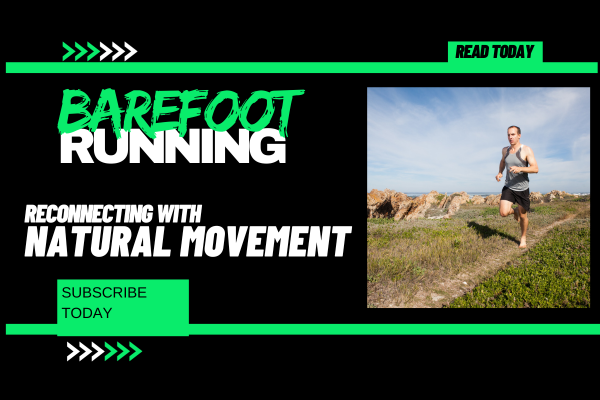Barefoot Running: Reconnecting with Natural Movement

Barefoot running, as the name suggests, is a minimalist running approach that involves running without traditional running shoes or with minimal footwear.
It has gained popularity in recent years as individuals seek to reconnect with the natural movement of their bodies.
In this comprehensive guide, we will explore barefoot running, its principles, techniques, and how you can transition to this liberating and mindful way of running.
Introduction to Barefoot Running
Barefoot running is a return to our primal roots, where humans evolved to run without cushioned shoes.
It involves running with minimal footwear or entirely barefoot, allowing your feet to make direct contact with the ground.
The Philosophy Behind Barefoot Running
Barefoot running is rooted in the belief that the human foot is naturally designed for running.
It encourages a more natural and efficient running gait, emphasizing a forefoot or midfoot strike rather than a heel strike.
The Science of Barefoot Running
Scientific research has shown that barefoot running can have several advantages:
- Reduced Impact: Running barefoot can reduce the impact on joints and lower the risk of certain injuries.
- Enhanced Sensory Feedback: Barefoot running allows your feet to provide real-time feedback about the terrain, helping you adjust your stride and foot placement.
- Improved Running Economy: Some studies suggest that barefoot running can lead to more efficient running mechanics.
Benefits of Barefoot Running
a. Stronger Feet and Ankles
- Barefoot running can help strengthen the muscles and ligaments in your feet and ankles.
b. Improved Balance and Proprioception
- It enhances your sense of balance and proprioception (awareness of your body's position), leading to better overall stability.
c. Natural Running Form
- Barefoot running encourages a more natural running form, reducing the likelihood of certain injuries.
Transitioning to Barefoot Running
Transitioning to barefoot running should be gradual to avoid overuse injuries. Here are some steps to consider:
- Start Slow: Begin with short runs on soft, forgiving surfaces like grass or sand.
- Build Foot Strength: Incorporate foot-strengthening exercises into your routine to prepare your feet for the demands of barefoot running.
- Choose Minimalist Shoes: If you prefer some protection, consider minimalist shoes with thin soles and flexible designs.
Practicing Safe Barefoot Running
- Mind Your Environment: Be aware of the terrain you're running on to avoid sharp objects or extreme temperatures.
- Listen to Your Body: If you experience pain or discomfort, stop and assess your form and running surface.
- Maintain Good Form: Focus on a midfoot or forefoot strike and a shorter, quicker stride.
Conclusion
Barefoot running offers a unique and holistic approach to running, emphasizing natural movement and enhancing your connection with the ground.
While it's not for everyone, those who embrace it often find a renewed sense of freedom and awareness in their running experience.
If you decide to explore barefoot running, do so gradually, prioritize proper form and safety, and enjoy the journey of reconnecting with your body's innate ability to run in its most natural state.
